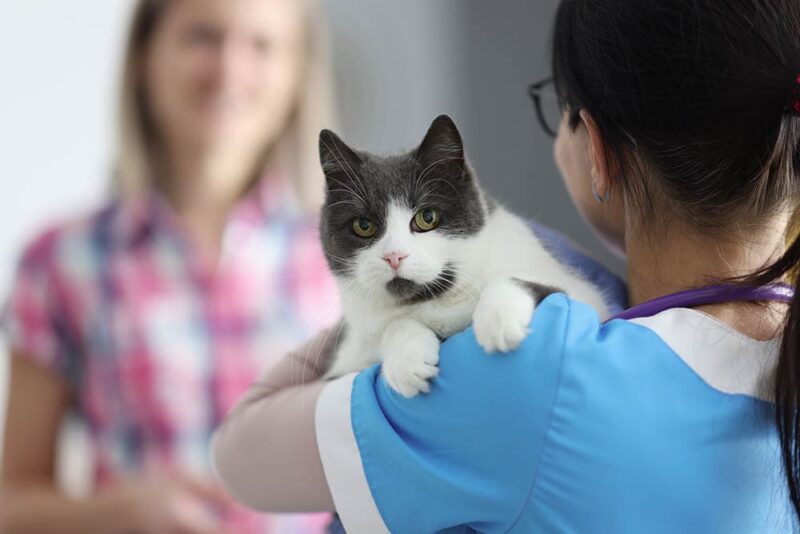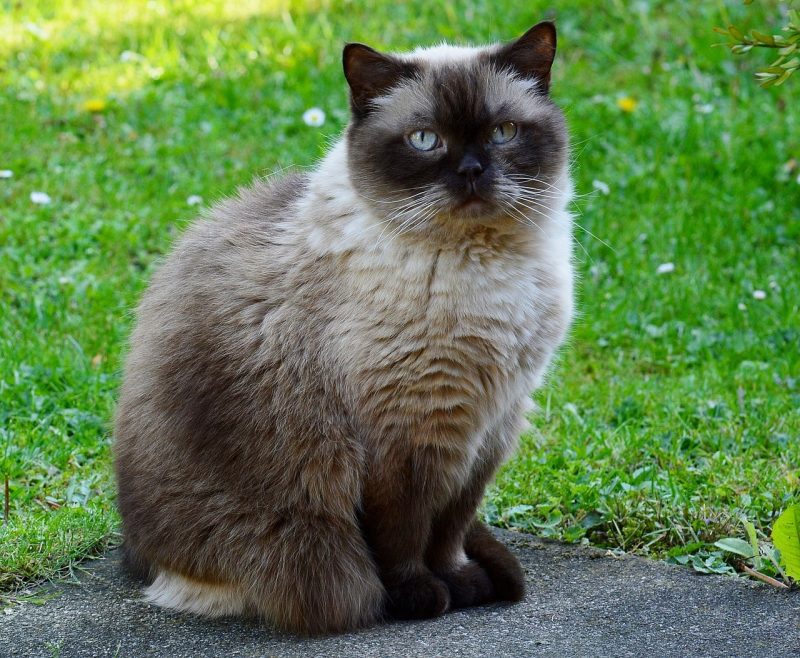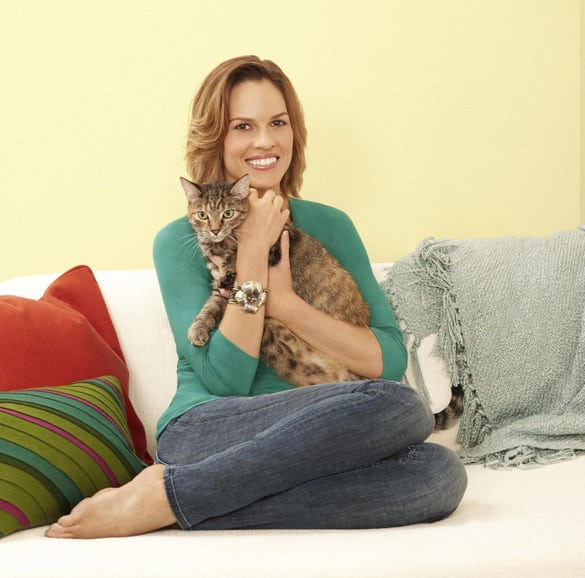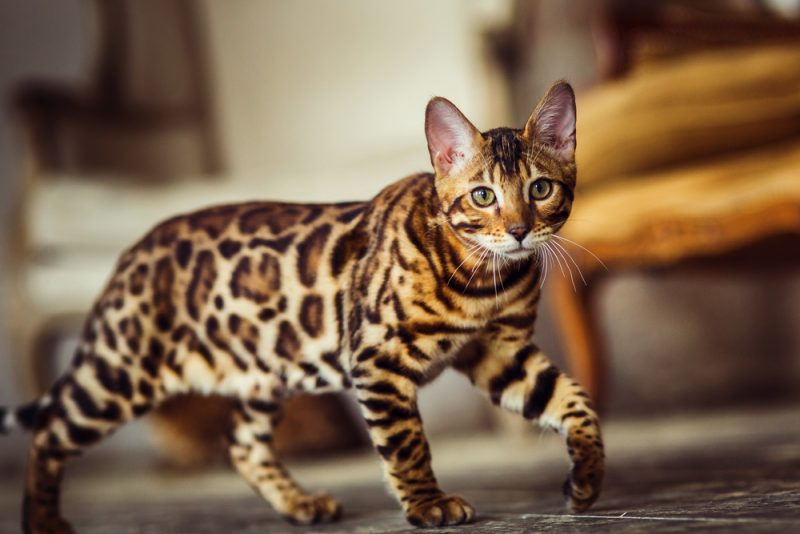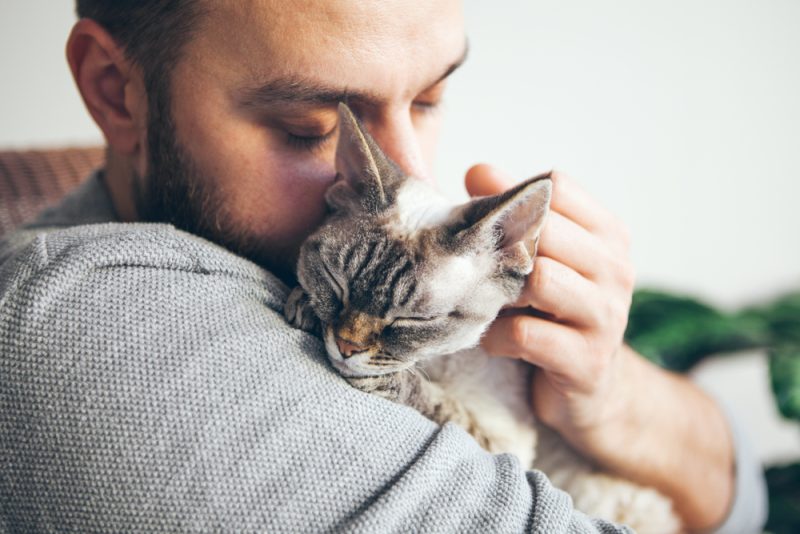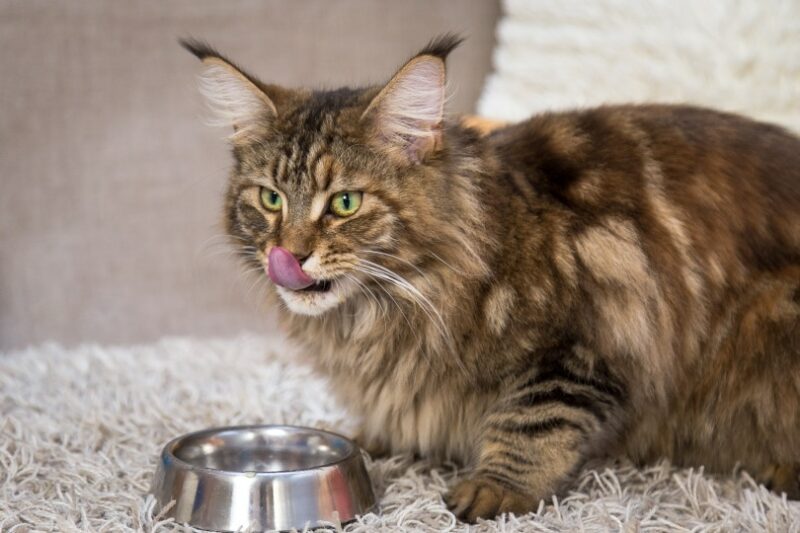If you’ve recently adopted a cat, you may wonder how to ensure your new companion stays healthy so you can enjoy years of happiness together. There’s plenty of feline health information for new cat parents to become familiar with, but a few essentials stand out as vital to know. Keep reading for these tips that new cat parents should know about feline health to help you get your cat off to a healthy start.

The 12 Tips That New Cat Parents Should Know About Feline Health
1. Veterinary Care
Cats of all ages require regular medical checkups to stay healthy. Most veterinarians recommend that adult cats have yearly wellness visits and then transition to coming in for checkups twice a year once they become seniors.
Finding a veterinarian should be a top priority as they’ll be your primary ally in keeping your companion healthy, and they can provide accurate information regarding everything from what your cat should be eating to how best to deal with problems such as hairballs.
If you need to speak with a vet but can't get to one, head over to PangoVet. It's an online service where you can talk to a vet online and get the advice you need for your pet — all at an affordable price!

2. Dental Health
Cats should have their teeth regularly brushed to keep dental issues such as gingivitis and periodontal disease at bay. Problems typically get started when plaque close to cats’ gums develops into tartar, which can eventually become periodontal disease.
Periodontal disease can be painful, cause problems with eating, and ultimately lead to tooth loss. Regularly brushing your cat’s teeth with feline-friendly toothpaste goes a long way toward keeping plaque and tartar buildup to a minimum, which may help prevent the development of dental disease.
3. Claw Maintenance
Indoor cats need to have their claws regularly clipped to ensure they don’t become too long. If left untrimmed, their nails can curl under and become ingrown, which is painful and generally requires veterinary treatment.
Plan on regularly trimming your cat’s nails; every 2 or 3 weeks is generally about right. Getting started when cats are still young reduces the stress involved later on.
Keeping your cat's paws healthy starts with keeping their nails trimmed. A great set of clippers like the Hepper Cat Nail Clipper Set can help you safely and easily do this at home. This set includes two sizes of clippers with stainless steel blades, built-in safety guards, and comfortable handles, along with a nail file and a storage pouch. Get ready for easy nail trimming!
4. Signs of Illness
Cats are masters at hiding signs they’re not feeling well; it’s part of how they stay safe in the wild. Sick cats can exhibit behavior changes. Many become withdrawn and avoid engaging in their favorite activities, but sudden increases in energy can also indicate something is going on that needs to be checked out.
Other signs of illness include changes in litter box use, a lack of grooming or excessively doing so, and eating or drinking more or less than usual. Cats who haven’t eaten for a day or have trouble peeing or breathing should be seen as soon as possible by a veterinarian.
5. Food
Feeding cats high-quality food packed with protein and all the vitamins and minerals they need to stay in top shape is key to supporting their overall health and longevity. Brands with Association of American Feed Control Officials (AAFCO) statements of nutritional adequacy generally include the full range of nutrients cats need. Make sure to pick a life-stage-appropriate brand since kittens and adult cats have different nutritional needs.
Several formulas are available to help address a wide range of health issues, including some designed to help cats with sensitive skin and encourage joint health. A veterinarian can help you determine which brand is ideal for your pet’s specific health needs but always get professional guidance before changing your cat’s food.
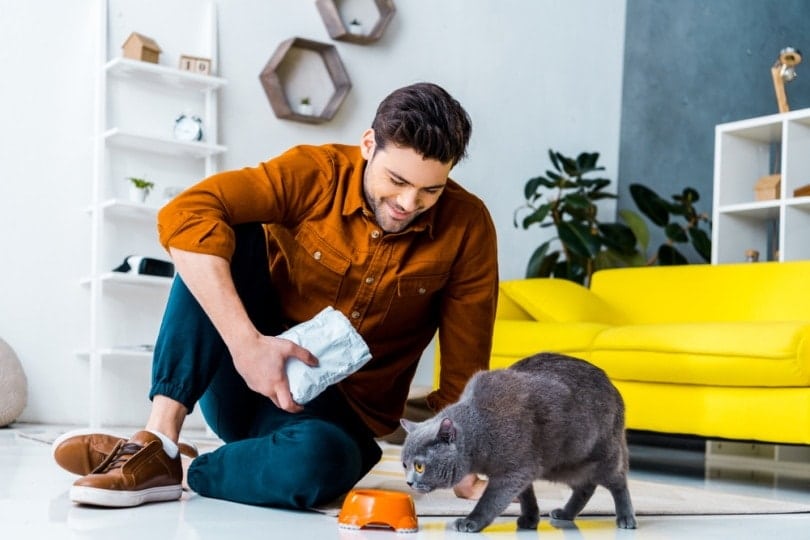
6. Hydration
Adequate hydration is critical to feline health. Drinking enough water helps keep cats’ urinary tracts and kidneys healthy, and it also helps prevent dehydration.
You can use a stainless steel or ceramic bowl since they’re less likely to retain bacteria and odors. Make sure to clean your cat’s bowls regularly with hot, soapy water to keep them fresh and clean.
Fountains tap into pets’ natural preferences to drink running water, which sometimes motivates reluctant cats to drink a bit more. Feeding cats wet food is another relatively easy way to increase their water intake.
Not every cat water fountain will make your life easier. This is why we recommend the well-designed Hepper Stainless Steel Cat Water Fountain, which has advanced triple filtration, three different flow modes, and an automatic shutoff feature.
This modern, minimalist fountain runs surprisingly quietly and is very easy to clean. At Catster, we’ve admired Hepper for many years and decided to take a controlling ownership interest so that we could benefit from the outstanding designs of this cool cat company!
7. Weight Management
Ensuring your cat stays a healthy weight is one of the most important things you can do to keep them healthy and possibly even extend their longevity. Overweight cats are at increased risk of developing conditions such diabetes and joint problems.
Because so many cats are overweight or obese, speaking with a veterinarian is the best way to determine if your cat is a healthy weight or not. Pet food packaging usually comes with feeding instructions you can use to figure out how much to give your cat. A veterinarian can help you determine how many calories your companion should eat daily, and you can work from there.
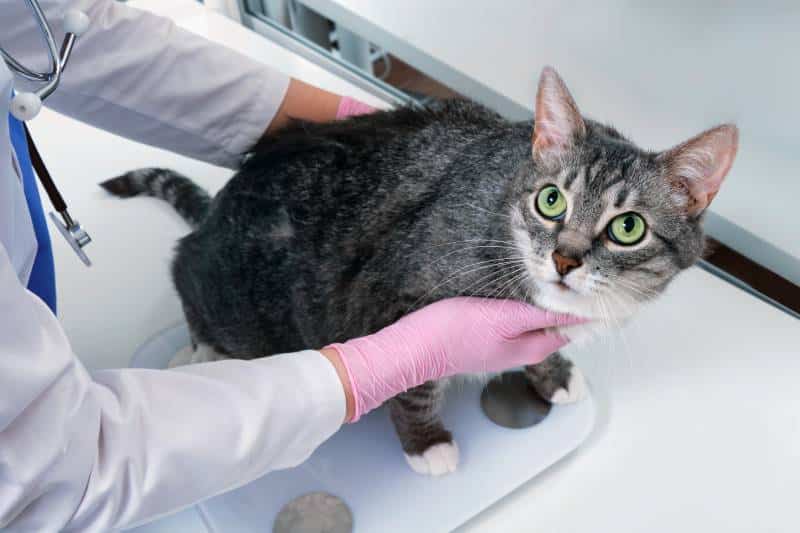
8. Toys, Scratchers, Perches, and Mental Stimulation
Cats require toys to keep them busy, or they can become bored, which can quickly result in behavior such as scratching furniture, eating plants, and generally being “destructive.” Providing cats with several toys to keep them engaged sometimes removes the motivation for them to find ways to entertain themselves.
They also need scratchers to encourage them to unleash their claws in places that won’t require you to replace your furniture regularly. Most cats love to hang out in high places, so be prepared to welcome them on your armoire, or you can set up a few cat trees, perches, or shelves for them to enjoy.
We're quite fond of cardboard as a material in cat scratchers, which is why we love the Hepper Hi-Lo Cat Scratcher. Encased within a well-constructed, modern birch plywood frame, this scratcher is designed with both cats and their owners in mind. It offers three versatile configurations to keep your feline friend active and entertained while enticing them to fulfill their natural scratching instincts (and away from scratching things they shouldn't). For more details, click here! At Catster, we’ve admired Hepper for many years, and decided to take a controlling ownership interest, so that we could benefit from the outstanding designs of this cool cat company!
Puzzle feeders provide cats with fun challenges that can keep them occupied when left alone for the day.
9. Exercise
Cats do best in environments where they get plenty of exercise. Cats enjoy activities that tap into their natural hunting instincts; most love to chase, bat, jump, and pounce. Getting enough exercise helps cats stay healthy weights, and it can also keep them feeling mellow and content.
Cats of all ages benefit from playtime. Kittens and young adult cats are happy to initiate pay sessions, but adults sometimes benefit from a bit of motivation through catnip or silvervine-infused toys. Try to set aside about 10 minutes to play with your cat a few times daily.

10. Brushing and Bathing
Short-haired cats benefit from weekly brushing to collect fur and massage their skin, and most enjoy the activity. Long-haired cats generally need daily brushing to keep mats and tangles at bay.
Regular brushing is a great way to reduce the formation of hairballs and limit the amount of pet hair and dander released into your home.
Most cats don’t need baths to stay clean, but if your cat gets into something stinky or needs a bath, stick with cat-specific shampoo, as human products are too harsh for felines’ skin.
11. Litter Box Maintenance
Cats have litter and litter box preferences, and not meeting their needs can be a stressor and potentially contribute to developing urinary tract problems. Cats prefer their litter boxes to be placed away from their food and water bowls and in quiet places. When it comes to what goes in the box, pick a litter brand that works for your cat and stick with it since cats don’t appreciate litter changes.
Keep the litter box clean; cats will find other places to use the bathroom when unhappy with their facilities. Daily scooping and regular deep cleaning with soap and hot water are part of the deal.
Combating tough cat litter smells is an ongoing battle for pet parents but luckily, there are products out there designed to help! Two products that significantly reduce odors are the Hepper Litter Additive and the Hepper Enzyme Spray. At Catster, we’ve admired Hepper for many years and decided to take a controlling ownership interest so that we could benefit from the outstanding designs of this cool cat company!
Image
Product
Details
Best Enzyme Cleaner

Hepper Advanced Bio-Enzyme Pet Stain & Odor Eliminator Spray
CHECK PRICE
Best Litter Additive
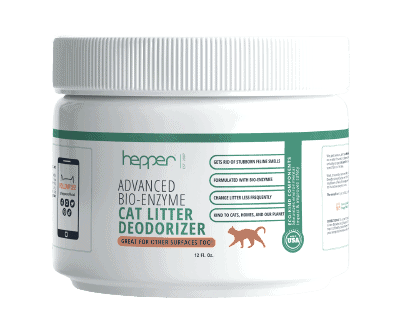
Advanced Bio-Enzyme Cat Litter Deodorizer
CHECK PRICE
12. Changes
Cats are creatures of routine, and many become stressed out by environmental changes. Switching their food and litter too quickly can make cats have difficulty adjusting and make them unhappy. Visitors, renovations, and moving can leave cats feeling out of sorts. New babies and pets are two other notorious stressors.
Urinating outside the box, excessive vocalization and grooming, stomach issues, hiding, and lack of interest in food can all indicate a cat is stressed out. Taking changes slowly and giving your cat time to get used to new people, products, and situations goes a long way toward helping them stay calm as their worlds change.
Conclusion
These suggestions are only the tip of the iceberg when it comes to feline health. Taking great care of cats entails giving them comfortable environments that meet their instinctual needs, feeding them appropriate amounts of high quality cat food, watching their weights, making sure they get enough exercise, taking them for regular veterinary checkups, and, most importantly, ensuring they get lots of love and attention. Congratulations on the new addition to your family, and may you both enjoy many beautiful years together.
Featured Image Credit: H_Ko, Shutterstock
